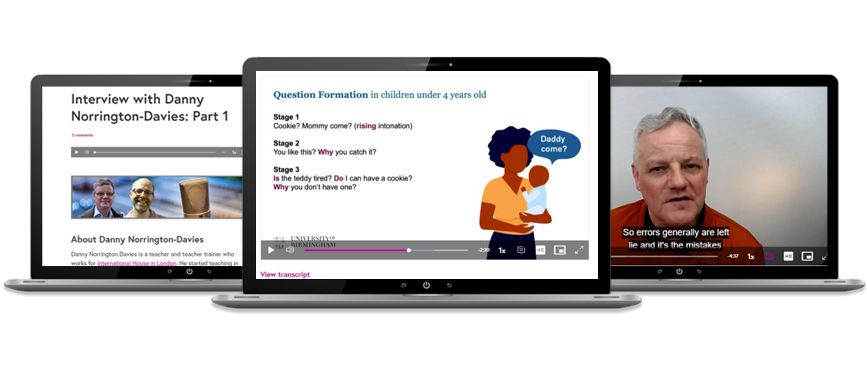Shape, Build, Run: An academic's perspective.
September 2022 - Helen Brown
We spoke to Dr Crayton Walker about his recent experience of developing a microcredential in collaboration with Educational Enterprise. He offers up some useful insights for other academics who are embarking on the process for the first time.
EE worked with Senior Lecturer in Applied Linguistics, Dr Crayton Walker to develop the University's very first micro-credential on the FutureLearn platform; TESOL: An Introduction to Language Teaching Methodology. It's a ten credit course delivered over 12 weeks with ten hours of learning per week. Designed to give an in-depth taste of postgraduate study, the course is aimed at teachers of TESOL courses (Teaching English to Speakers of Other Languages) who want to gain some formal training and develop their careers. The first run of the course is now complete and has gained excellent student feedback:
‘The mix of mini-lecture videos, quiz-like activities, and exercises were really engaging, and the variety really helped my motivation.’
‘By the end of the course I could really see that the course had been building towards a specific goal rather than just general learning of various topics.’
When academics collaborate with us, they often report how much they have learned from the experience of designing online distance learning. Here's Crayton's perspective of working on the course development using EE's processes:

What advice do you have for fellow academics?
‘Online teaching should never be seen as a limited version of face-to-face teaching, in reality it is the other way around. In fact, I think it opens up more possibilities for teaching students.
Close collaboration between the academic and the Learning Designer is key. Helen and I were continuously discussing the possibilities of how best to present the content to make it as engaging as possible for students. The relationship worked well as we were able to feed off each other’s ideas.
Learning by distance should not mean learning alone or in isolation. For this course we set up study groups and designed activities for the students to collaborate asynchronously. I was pleased to see that this encouraged the development of an online learning community in the course. We achieved this by careful structuring of activities and providing specific discussion questions to give students a starting point.’
What did you learn?
‘I learnt a lot of new skills and encountered a range of new ideas for making courses that are innovative and engaging for learners. I now know lots more about the functionality of the FutureLearn and Canvas platform!
I learnt the importance of resourcing a project like this properly as developing high quality online material is both time and resource intensive.’
What were the challenges you faced?
‘My greatest challenge was to keep the daily demands of my job from encroaching on the time which I needed to work on the microcredential. I needed to be able to put the development work at the top of my ‘to-do list’ and have the other demands lower down on the list. It was so important for others in the department to understand the pressures of producing significant amounts of online material and to be allowed to devote the time that was necessary. The work is enjoyable and creative but also time consuming’
The design and build of online distance learning courses is intensive but the bulk of the teaching delivery is done before the course starts. When the course runs, the tutor is free to focus on engaging in discussion forums and providing in-depth feedback to students.
Take away points
Crayton summarises that the development of good online material requires a combination of ‘good ideas, a knowledge of what is possible and time!’ TESOL: An Introduction to Language Teaching Methodology is already in its second run and we look forward to hearing how future cohorts get on!